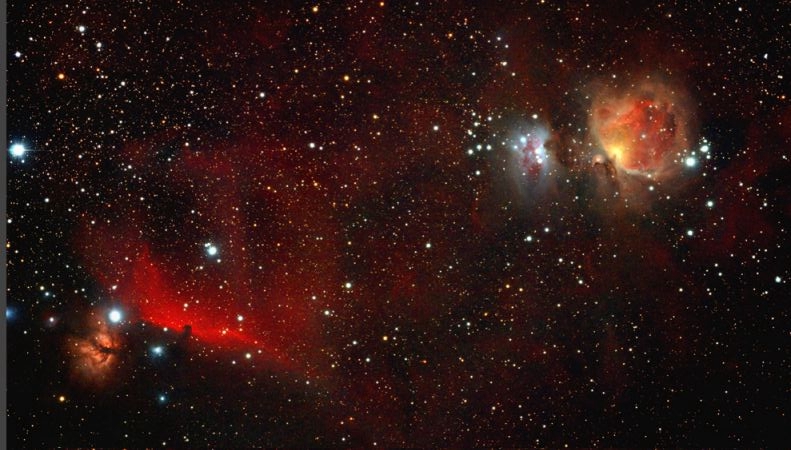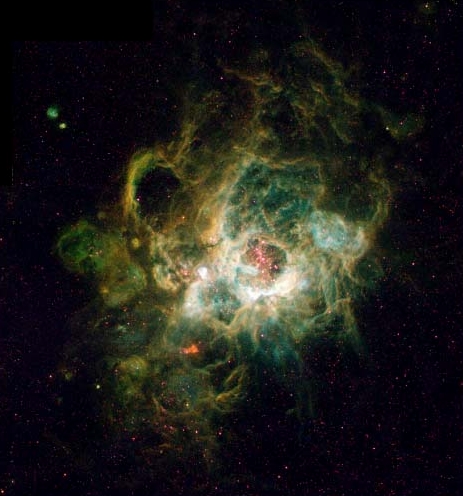
MOLECULAR CLOUDS: THE BIRTHPLACE OF STARS
The stars begin their journey into the light within the darkest and coldest places in the universe that are molecular clouds. Molecular clouds are highly complicated structures that maintain inside of them a battle of opposing forces which produce pressure and turbulence. The molecular cloud is made up of very dense material which must be supported by some forces to prevent self-gravity from collapsing upon itself. Some of the forces are obtained from thermal reactions which produce pressure that pushes against gravity. Some of the nonthermal means of support from gravity is provided by magnetic fields and turbulence. Scientific observation indicates that turbulence occurs in the cloud fluid that is in the nature of supersonic character motion.
The stars actually form from the cores of the clouds which are supported in part by magnetic fields. For a cloud of certain size and mass there is a minimum magnetic field strength that is required to prevent collapse. And so within the complicated cloud structures of different geometries and variable densities other substructure formations occur which lead to gigantic clumps of cloud material and the beginnings of future stars. At present there is no definitive theory on what causes the formation of substructure within molecular clouds; but scientists do observe existence of clumpy structure because whenever a cloud begins to collapse, a wide spectrum of wave motions can be excited.

NGC 604 in galaxy M33
August 7 1996. Hui Yang (U.IL) and NASA
Credit & Copyright: Emmanuel Mallart